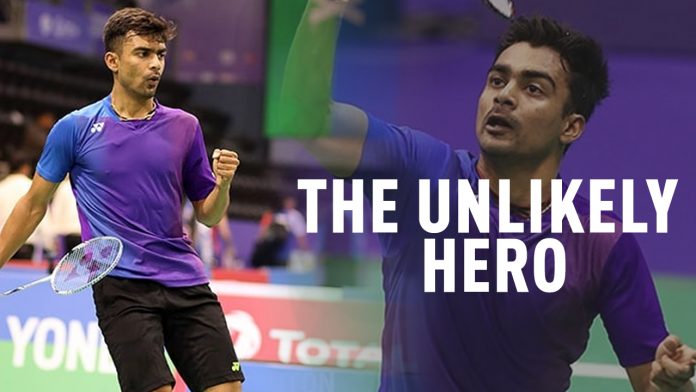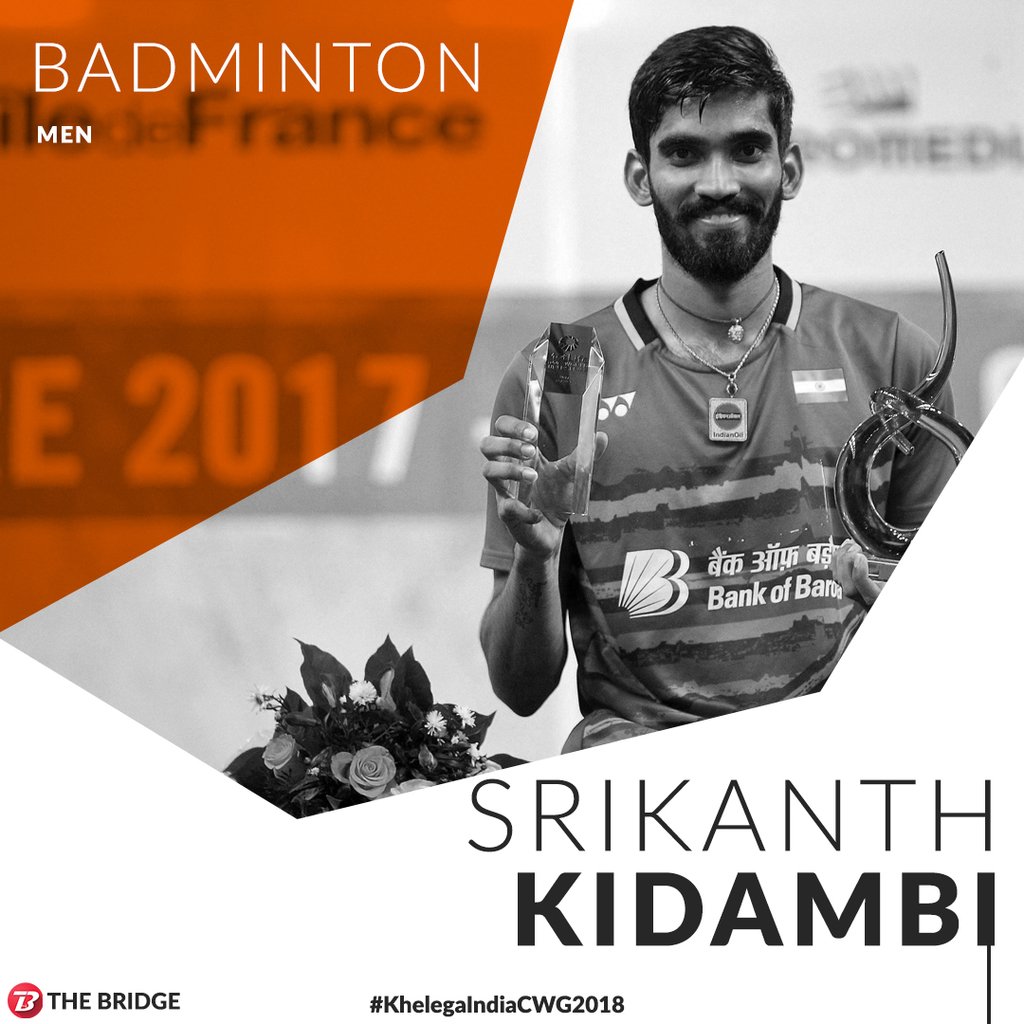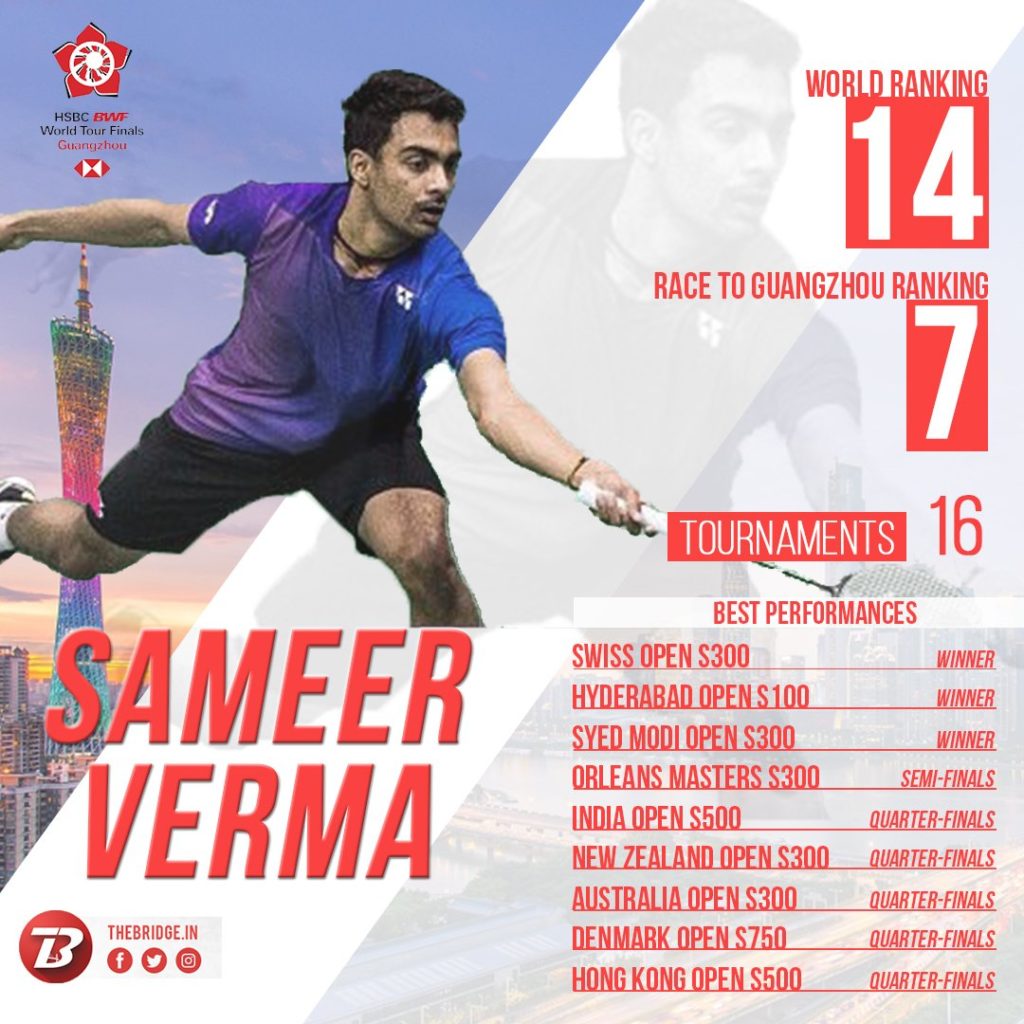Badminton
Why Sameer Verma is playing the World Tour Finals and Srikanth isn’t

The BWF World Tour Finals, formerly known as the World Superseries Finals, has been one of the most prestigious tournaments on the badminton calendar ever since its inception in 2008. It has been purported as showcasing the top 8 players/teams of the year battling it out against each other. It is also unique in that it follows a group-stage format as opposed to a straight knock-out, leading to a host of mouth-watering clashes between the best in the world. Players fight hard all year to qualify for it and greatly look forward to winning it.
However, a quick look at the qualifiers this year throws up a lot of head-scratchers. In men’s singles, 3 of the top 8 players (as per the current world rankings) have failed to qualify and their places have been taken by world no. 10 Tommy Sugiarto (INA), no. 14 Sameer Verma (IND) and no. 17 Kantaphon Wangcharoen (THA).
In women’s singles, world no. 16 Michelle Li (CAN) managed to qualify ahead of higher ranked mainstays of the women’s game like He Bingjiao (CHN), Sung Ji Hyun (KOR) and Saina Nehwal (though as it eventually panned out, the injury withdrawal of World Champion Carolina Marin gave Bingjiao the opportunity to compete, but she had to pull out herself with an injury of her own).
Similarly, in both men’s and mixed doubles, 3 of the top 8 pairs on the world rankings will be missing from Guangzhou (women’s doubles is in a unique position where 5 of the top 11 pairs are Japanese and thus 3 of them will be missing out, but only because countries are limited to 2 players or teams per event).

So why the discrepancies?
In order to understand these discrepancies, one needs to understand the workings of the different rankings maintained by the BWF.
The qualification for the year-end finals has actually never depended directly on the world rankings. Until last year, it was based on the Superseries rankings (known officially as “Destination Dubai Rankings” with the event held in Dubai) with the World Champion (or the Olympic Champion in Olympic years) getting an automatic entry.
The world rankings are based on the 10 best results achieved by a player throughout the year.
All tournaments – World Championship, Superseries events, Grand Prix events, team events like Thomas/Uber Cup, Continental Championships and multi-sport games – count towards the world rankings. On the other hand, only the superseries events counted towards the Superseries rankings but, all the superseries events a player participated in added up and, unlike the world rankings, there was no maximum cap on the number of tournaments.
However, as there were a total of only 12 Superseries tournaments, the World rankings and the Superseries rankings tended to largely sync up by the end of the year. For elite players, the world rankings would anyways largely consist of results from superseries events only (besides some other big events like the World Championships and the previous year’s Superseries finals) whereas Grand Prix and lower events would have little effect. Thus, while 1 or 2 players from the top 8 might still miss out on the year-end finals due to differences in the ranking methodology, their place would normally be taken up by the world no. 9 or the world no. 10 and the event still felt like the best competing against the best.
But, at the beginning of 2018, the BWF made a well-publicized change to its tournament structure.
Superseries and GrandPrixx events were done away with, and replaced by the tennis-inspired BWF World Tour, which consists of numbered events ranging from Super 1000 to Super 100. In turn, the superseries rankings were replaced by the BWF world tour rankings (now known as the “Race to Guangzhou”). However, the key difference is that while there were only 12 superseries events, there are as many as 26 world tour events and ALL of them add up to the world tour rankings.
Thus, lower ranked players can now accumulate World Tour ranking points simply by playing more tournaments, something which top players are unlikely to do considering they generally last longer in the events they do play, and they are also generally expected to play more non-world tour events like multi-sport games, continental championships and the World Championship.
As an example, consider the case of Kantaphon Wangcharoen. Wangcharoen is a name that is unlikely to ring a bell (outside his home country of Thailand) even with some of the most ardent followers of badminton. He started 2018 with a world ranking of 58, needing to play the qualifying rounds to even get into Super 500 tournaments, and has had a highly admirable rise to world no. 17. He could be one for the future, but is he already good enough to be playing the most elite tournament on the calendar?
In 2018, Wangcharoen has played a total of 52 matches with a modest 30-22 win/loss record. His 2018 record against the other qualifiers of the world tour finals is a dismal 1-8 (his only win coming against 8th placed qualifier, Anthony Ginting). However, he has played as many as 17 World Tour events, with his deepest runs being semi-final appearances at the Swiss Open and the Thailand Masters (both Super 300 events). He has, though, definitely shown potential by reaching the quarters of the Indonesia Open Super 1000 and the French Open Super 750, besides three other smaller events.

On the other hand, Kidambi Srikanth has also played 52 matches in 2018 with a better win/loss record of 36-16, against tougher opposition, but has featured in only 10 world tour events. He reached the semis of the Denmark and Malaysia Opens (both Super 750 events) besides featuring in 5 other quarter-finals including the China Open Super 1000 and the remaining three Super 750 events. While he has a 3-7 record against the Guangzhou qualifiers, 5 of those losses have come against the undisputed best player at the moment, Kento Momota, whom Wangcharoen has never faced.
Another extreme example is Michelle Li. She qualified for Guangzhou on the back of playing a whopping 20 world tour events. 8 of these tournaments ended for her in the 1st round itself while another 9 ended in the 2nd round, resulting in a 2018 world tour win/loss record of 19-19!!
While Sameer Verma has also greatly benefitted from appearing in 16 world tour events, his place in the world tour finals is a little more deserved. Besides winning 3 titles (2 Super 300’s and a Super 100), he has an impressive win/loss record of 32-16 in 2018, including a 4-2 record against the other Guangzhou qualifiers and a win against Momota.
The Solution
There is no doubt that, by their own personal standards, Srikanth has had a disappointing year while both Wangcharoen and Sameer have had breakthrough years. However, when compared on an even platform, Srikanth has been a better player in 2018 than both Sameer and, especially, Wangcharoen. There are other such instances in other disciplines as well and thus, for the BWF World Tour Finals to continue to be seen as the tournament where the best take on the best, some changes are required.
The easiest change would be to simply use the world rankings as the qualification to the world tour finals. However, due to sponsorship reasons and the desire to promote the world tour itself, the BWF is unlikely to take this path. Also, there is a sense of logic and fair-play in considering only the world tour events as these events are open to all. On the other hand, multi-sport games and continental championships are open only to players from certain regions, points earned in team events greatly depend on the quality of the whole team, and even the world championship has restrictions on the number of players per country that can participate.
Also Read: Has 2018 been the year of Sameer Verma?Another option is to consider only Super 1000, Super 750 and maybe the Super 500 events for the world tour rankings. However, this defeats the purpose of the world tour in the first place. After all, Super 300 and Super 100 events can’t be logically said to be part of the world tour if they don’t contribute to the world tour rankings. Including them adds to their prestige and also provides lower ranked players with an opportunity to qualify in case they have a breakthrough year.

In this writer’s opinion, the best option is to follow the template of the world rankings and compose the world tour rankings from a player’s best 10 results on the tour. As can be seen from the below table, the top players are generally able to play 10-13 world tour events per year. Thus, 10 is an ideal number to allow players to complete their minimum requirement, while still providing room for a couple of bad tournaments.
| Player Name | World Ranking | No. of World Tour Events Played | Race to Guangzhou Rank | |
| Current Method | Top 10 Results | |||
| Kento MOMOTA (JPN) | 1 | 10 | 2 (Q) | 1 (Q) |
| SHI Yuqi (CHN) | 2 | 11 | 4 (Q) | 3 (Q) |
| CHOU Tien Chen (TPE) | 3 | 16 | 1 (Q) | 2 (Q) |
| Viktor AXELSEN (DEN) | 4 | 8 | 20 | 12 |
| CHEN Long (CHN) | 5 | 11 | 13 | 9 |
| SON Wan Ho (KOR) | 6 | 13 | 5 (Q) | 4 (Q) |
| Anthony GINTING (INA) | 7 | 13 | 8 (Q) | 5 (Q) |
| KIDAMBI Srikanth (IND) | 8 | 10 | 14 | 7 (Q) |
| Kenta NISHIMOTO (JPN) | 9 | 13 | 9 | 8 (Q) |
| Tommy SUGIARTO (INA) | 10 | 17 | 3 (Q) | 6 (Q) |
| Sameer VERMA (IND) | 14 | 16 | 7 (Q) | 10 |
| Kantaphon WANGCHAROEN (THA) | 17 | 17 | 6 (Q) | 14 |
It can be seen from the above table that using the top 10 results method, world no. 4 Victor Axelsen still stays out of contention, having competed in only 8 world tour events in an injury-plagued year. World no. 5 Chen Long (having attained a lot of points from the Asia Championships, Asian Games and Thomas Cup) misses out narrowly, having fallen from the rarefied heights he attained in 2016. However, Axelsen and Long’s places are taken by world no. 9 Kenta Nishimoto and world no. 10 Tommy Sugiarto, while world no. 8 Srikanth sneaks in as well. Sameer Verma, despite his great year, misses out narrowly and needed one more big result to make it, while Wangcharoen is, rightfully so, still some way from qualification.






